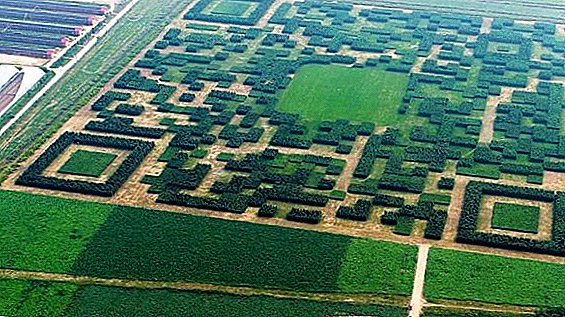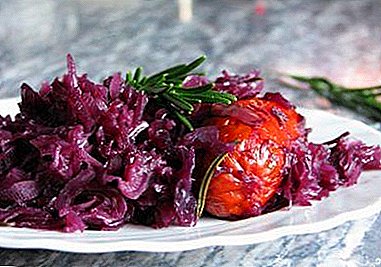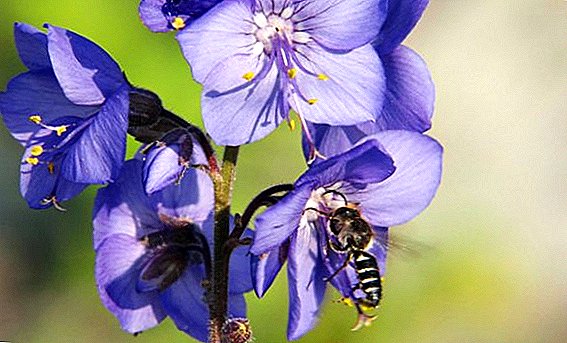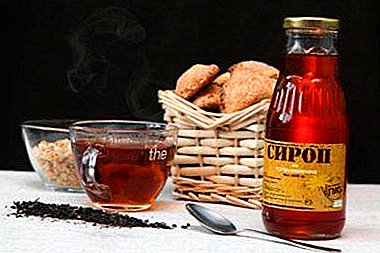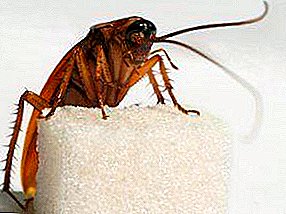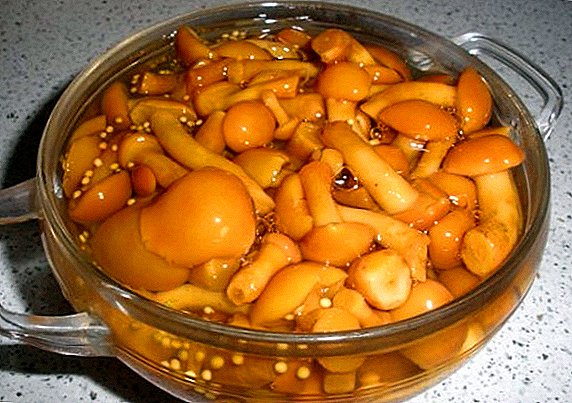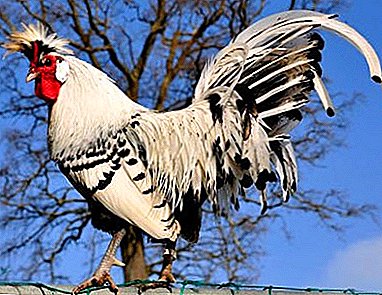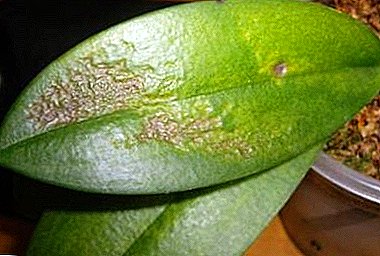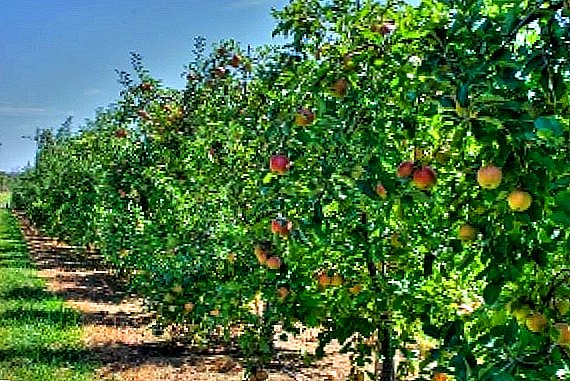
Low-growing apple trees are low trees, the maximum height of the trunk is 120 cm, diameter of the crown is four to six meters, and the tree grows to a height of three to five meters.
Grass usually grows under short apple trees.
They are usually grown on two types of stock: medium tall and vigorous.
Description of varieties
Best in the garden grow natural semi-dwarfs, i.e., they are ordinary low-growing apple trees that grow 3–4 meters tall. It is very convenient to care for them, they start to bear fruit early. To low-growing varieties of apple include: "Silver hoof", "People", "Gorno-Altai", "Hybrid-40", "Uslada", "Moscow Pear". They are great for sales, and grow well in our neighborhoods.
Main characteristics of low-growing varieties
Sort "Silver hoof" launched at the Sverdlovsk Experimental Station. A small tree with sweet and creamy apples, the weight of one fruit is 80 grams. They begin to ripen with the arrival of August, and at the end of the month they become bulk. Shelf life is small, about a month. Trees bear fruit annually from 3-4 years old, the yields of apples are average, the variety is resistant to winter.

Variety "People" it is characterized by a low-growing tree, belongs to natural semi-dwarf trees, enters fructification from 2-3 years. The apples are medium, the weight ranges from 90 to 115 grams, with golden-yellow peel, the taste is excellent, dessert. You can collect the fruits from the end of August, the shelf life of about 4 months. The advantages of the "People's" variety are high, early and constant fruiting, are well preserved.
Low-growing variety "Moscow pear" winter-hardy, fruits are small, the taste is the same as that of the tall variety “Moscow pear”.
Apple variety "Gorno-Altai" different tree with a rounded crown of medium thickness. Apples are small, about 30 grams, the shape is rounded-conical, the color is bright red. The flesh of apples is juicy and creamy, the taste is sweet and sour, the fruits contain about 12.9% sugar. Apples are great for compotes, jam, and they can be consumed fresh.
The harvest begins from the end of August, because you need to have time before the fruits ripen, because then they begin to crack. Begin to bear fruit from 4-5 years after planting the seedlings, the variety tolerates winter days. Variety "Gorno-Altai" can grow anywhere, even where other trees die.
Tree varieties "Hybrid-40" medium sprawling, usually without center conductor, resistant to scab, winter-hardy. The apples are large, their peel is green-yellow. The flesh is tender, juicy, white, the taste is sweet and sour. The shelf life of the fruit for 2 weeks, begin to break out at the end of August. The first crop can be harvested for 3-4 year after planting, stable, annual and high during the first 15 years.
But the variety "Hybrid-40" is very rare, so to speak, is at the stage of extinction. It is resistant to scab. The disadvantage is that the crown, which consists of skeletal branches, from the snow and heavy crops can break off at the bottom. To prevent this, skeletal branches are tied up with each other, and supports must be made.

Undersized variety of apples "Uslada" pleases us with crops from 2-3 years. The weight of one fruit is about 120 grams, excellent dessert taste, high sugar content. Begin to ripen with the arrival of autumn, stored almost 2.5 months. Fruits are greenish-yellow.
Fruit varieties "Young naturalist" reach average sizes of about 120 grams. The shape of apples is flat-round, the peel is green-yellow, the flesh is juicy, good sweet-sour taste. The harvest time is September, the shelf life of the plucked apples is about two months.
Fruit
General characteristics of apple fruits undersized varieties: they are medium in size, ranging from rounded to flattened. The rind is usually smooth, dry and shiny. The main color of the rind of almost all fruits is greenish-yellow.
The stem of apples is thick and curved, deep funnel, blunt-conical. The flesh is greenish, juicy, dense, the taste of the fruit is sweet and sour, some varieties are endowed with dessert taste. Minimum shelf life of 2 weeks, maximum 6 months.
It is also interesting to read about the care and planting of apple trees.
Tree
Low-growing apple trees are low, have a crown of average density. The branches exit from the trunk at a nearly right angle, their ends are down. The crown of trees is smooth, a gray-brown variety. The shoots of stunted apple trees are thick and straight, brown in color, drooping down, the lentils are small and few. The shape of the kidneys is conical, and they are lightly pressed.
The leaves are large, wrinkled, dull hue. The leafy plate is concave, lowered with a wavy edge. The flowers of almost all varieties of low-growing apple trees are large with raised edges.
Virtues
Benefits short apple trees:
-Apple trees begin to bear fruit early, usually 2 or 3 years after planting. And two years later, begin to bring the highest yields. Stunted gardens are considered very effective in terms of cost savings, since three times more stunted apple trees can be planted on the same plot than apples of ordinary varieties.

-Fruit high quality, large and have a bright peel.
-Trees grow 2.5 meters in height, making it easier to take care of the garden, pruning branches, plucking apples and easier to protect against pests.
- With varieties of undersized apple trees with strong winds, the fruit is less likely to break, and it does not break the trees.
-Root system low-growing apple trees are not afraid of groundwater, even when they are very close to the surface of the earth.
disadvantages
The disadvantages of low-growing varieties include the fact that trees need support and mulching, and the near-barking circle is mulched with peat, compost, humus, sawdust.
Lifespan a short garden is only 25 years old, but in this short period of time the apple trees delight us with wonderful crops and the most delicious apples. In rainy and wet years, leaves and fruits of apple trees can be affected by scab.
Care features
Pruning
Pruning low-growing varieties of apple trees is carried out in order to strengthen young shoots, to form the crown, to increase the number of walking shoots, to remove dry and diseased branches.

Pruning trees do in spring and autumn. In the spring, the frozen branches are removed, which leads to an increase in yield. In the fall, pruned branches are pruned, so trees prepare for rest.
In the autumn pruning is carried out in this order:
First you need to remove broken and dry branches.
Remove weak shoots that are too close to each other.
All wounds after cutting the branches need to cover with garden pitch.
Everything that has been removed is necessary to burn in order to prevent the spread of infections in the apple orchard.
Pruning should be immediately after planting seedlings. This is done to balance between the root system and the crown of the tree, because the growing branches consume a lot of nutrients. The next pruning is done in about 3 years, removing only dried and diseased shoots.
Fertilizers
The proper care of fruit trees, including the timely application of fertilizers and the feeding of trees, affects the establishment of fruit buds. Until mid-July, stunted apple varieties are fed with nitrogen.
It affects the enhanced growth of green mass, and after the second midsummer, fertilizers are used, which include low nitrogen content, phosphate and potash fertilizers, which allows seedlings to prepare for the upcoming cold weather. At the beginning of summer it is necessary to feed the plants with manure, use ash at the end of the summer season, and also use mineral fertilizers in the complex.
Watering
Low-growing apple varieties are watered for almost the entire calendar year, except for winter. Water is poured into the grooves or holes. The best way to water considered drip irrigation. Simultaneously with irrigation, fertilizers are applied and fertilized.

With the onset of late autumn, the end of October, as well as in early spring, trees are abundantly watered, the soil should be wet, and soil and roots should not dry out. Watering rate 3 buckets on one tree, it depends on where the apple trees grow.
Watering stunted apple should be 3-4 times. The first time is watered before the trees start flowering, the next is at the beginning of summer, the third is before the apples start to ripen.
Winter
Preparation of low-growing apple varieties consists of the following steps:
1. Feeding the apple trees phosphorus and potassium. These fertilizers can strengthen the tree and increase its winter hardiness. Also a great effect affects foliar dressing - spraying trees with a solution of potassium monophosphate.
2. Cleaning apple trees do in order to get rid of pests and pathogens. It is necessary to clean with a sharp knife all existing cracks on the bark, and then burn it.
3. Whitewashing the garden in autumn protects it from disease-causing organisms, and it protects the bark of apple trees from the sun’s rays, which can cause its burns, and prevents the occurrence of cracks from temperature fluctuations in winter.
4. Watering trees, you must have time to mid-October.
5. Make fungal disease preventioni.e. spraying trees with copper sulfate solution. Spray better in November, when all the leaves fall off and the tree trunk is clearly visible.
6. Apple orchard protection from rodents. The hole around the tree is covered with everything that is available: dry raspberry or currant branches, pine spruce branches, reed or plastic gratings.
7. For mulching use everything that is at hand, a great option would be to use dry materials. Properly done work on the preparation of apple orchard will allow you to perfectly endure the winter, and to please gardeners with excellent crops.

Landing features
Trees Garden growers recommend planting low-growing apple varieties to fall, the roots will get stronger over the winter, and with the arrival of spring they will begin to grow and develop intensively. Apple trees are planted in the spring, but you need to have time to start budding, because if you plant later or on time, the seedlings can dry out. Can be planted and annual and biennial trees.
Planting undersized apple trees begins with the preparation of planting holes, which are dug for injury. It is dug 50 cm wide and 50 cm deep. When digging a hole, the upper layer is aligned to the right, and the lower layer of the earth - to the left.
At the bottom of the pit, one bucket of humus, pre-rotted beforehand, is poured, and a complex mineral fertilizer, nitrophore is added, and the whole mixture is mixed with the top layer of soil. If the soil is clay and heavy, then add a little sand.
Now you can start planting a garden. The root system of apple trees is straightened, inserted into a hole and filled with earth, first from the upper layer, then from the lower layer laid aside to the ground. The buried earth is trampled down, and the seedlings need to be deepened so that the vaccinations are at a height of 5-7 cm from the ground.
Then they make holes around the trunk, and the planted plant is watered. The soil around the apple trees is mulched with earth or humus. If a strong wind blows, the trunk of the tree must be tied to a peg.


